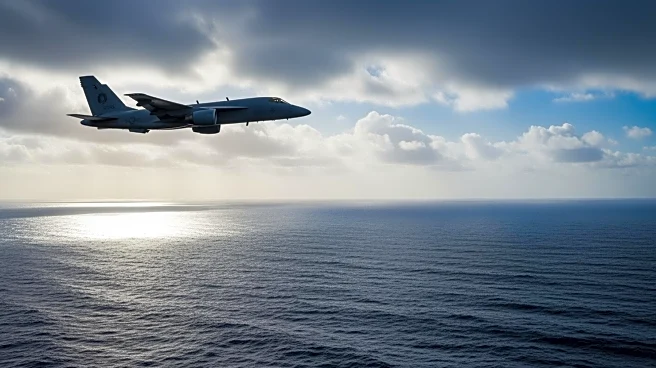What's Happening?
The German military has introduced the Boeing P-8A Poseidon, its largest combat aircraft, to enhance maritime patrol and reconnaissance capabilities in the North Atlantic. This aircraft is the first of
eight planned deployments at the Nordholz air base in north-western Germany. The P-8A Poseidon is designed to monitor large sea areas, track ship movements, and locate submarines using advanced radar, acoustic, and optical systems. It will primarily operate in the GIUK gap, a strategic area between Greenland, Iceland, and the United Kingdom, which is considered vulnerable to Russian submarine activity. The aircraft can deploy sonar buoys and combat submarines with torpedoes or depth charges. The German Navy emphasizes the importance of these modern reconnaissance jets for NATO cooperation, with training and maintenance conducted jointly with the United States, Britain, Norway, and Australia.
Why It's Important?
The deployment of the P-8A Poseidon represents a significant upgrade in Germany's maritime defense capabilities, particularly in the strategically crucial North Atlantic region. This move is part of a broader effort to bolster NATO's maritime security and deter potential threats from Russian submarines that could disrupt supply lines in the event of conflict. The collaboration with NATO allies in training and maintenance underscores the importance of international cooperation in maintaining regional security. The introduction of these advanced aircraft is expected to enhance surveillance and response capabilities, thereby strengthening NATO's overall defense posture.
What's Next?
Germany plans to complete the deployment of all eight P-8A Poseidon aircraft by 2028, replacing the older P-3C Orion model. As these aircraft become operational, they will likely increase NATO's ability to monitor and respond to maritime threats in the North Atlantic. Continued joint training and maintenance with NATO allies will ensure that the crews are well-prepared to operate these sophisticated systems. The strategic deployment of these aircraft may prompt further investments in maritime defense capabilities by other NATO members, enhancing collective security in the region.













